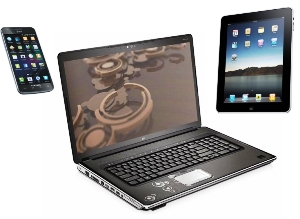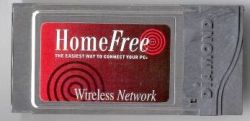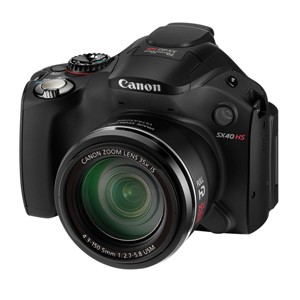Tech Update 2013
 Part
1: Hardware
Part
1: Hardware
As we enter our 14th year as an online magazine, we
thought it might be fun to do a little tech update, looking back and
looking at where we are now. Then we’ll look at what works best for
riders.
14 years ago we had desktops and laptop computers. Today you can
add tablets and smart phones to that list. In fact, much of the
editorial content for this month’s issue was produced on a tablet.
Back then we had modems at home and T1 lines at the office. Now
we can add DSL, High Speed Cable, wireless modems on G4LTE networks
and Wi-Fi to the list.
In 1999, GPS was just hitting the scene in a very expensive
infantile way. For most of us, paper maps were the norm. Today we can
get a useful GPS device for about $200, or use the map apps included
in a phone or tablet, or search robust maps online.
14 years ago many of us had a simple cell phone. Today we have
robust smart phones that do everything but tie our shoes in the
morning.
Back then digital cameras were just hitting the market,
providing sub-par quality, leaving the more trained shooters to
continue shooting film until the digital technology would match that
of film. It’s happened. Today we have all kinds of digital cameras
available to us from simple point-and-shoots for amateurs to
ultra-expensive bodies and lenses for hobbyists and pro shooters.
 That’s
a lot of toys!
That’s
a lot of toys!
So what are we going to take on the ride and why? And what are we
going to leave home.
The first, most obvious tool is the smart phone. If you like to
travel away from the interstate, be sure you pick a carrier with
broad coverage. In the Northwest, Verizon still owns that crown. I
have yet to be without service from Verizon, when someone with AT&T
did. But the reverse is common once we’re out of the less populated
areas.
Above: In early 1999, our office in Seattle was
one of the first to use a wireless connection between a desktop and
a laptop, utilizing a HomeFree setup by Diamond. Wireless routers
showed up a few years later.
If you need to keep up with email, text and so forth, a data plan
makes sense and provides you access to all the database things you
might want on the road like where to eat, where a bike shop is or
where to stay the night.
The tablet may or may not be necessary if you already have a
smart phone. The advantages are a larger screen, a keyboard add-on,
long battery life and the ability to see life at a glance quickly
and easily. For someone who plans to be journaling, blogging or
creating editorial while on the road, this is a great tool.
The days of taking a laptop on a motorcycle ride are numbered.
For most, smart phones and tablets get the job done in the most
compact way possible. There are those who will still need to carry
one because laptops are productivity monsters for those who require
specialized software to take care of business wherever they are. For
most of us that is not the case.
If you’re toting a smart phone and a tablet, you are already
carrying two cameras. Do you need to carry a third? For most of us
the smart phone gets the job done.
 Whether
you’re a pro shooter or a
serious hobbyist, you’ll want to have a real camera along. But an
entire 35mm DSLR kit is probably out of the question. Too bulky, too
expensive to lose. We’ve found that a lot of great pics can be
shot, edited and reproduced in the pages of magazines by using a
top of the line pro-sumer point-and-shoot, like Canon’s SXxx series.
Our SX10 has had a number of photos featured in various travel and
motorcycle magazines. Since it zooms from 18-500mm analog (it has up
to 3x digital zoom, but they never look good), it does a lot of
things right. You can shoot it in auto, or go full manual for the
most control, just like you might with a 35mm DSLR. No extra lenses,
no extra flash attachments, just quick, simple and robust. The only
addition we made to ours is adding a circular polarizing filter.
Whether
you’re a pro shooter or a
serious hobbyist, you’ll want to have a real camera along. But an
entire 35mm DSLR kit is probably out of the question. Too bulky, too
expensive to lose. We’ve found that a lot of great pics can be
shot, edited and reproduced in the pages of magazines by using a
top of the line pro-sumer point-and-shoot, like Canon’s SXxx series.
Our SX10 has had a number of photos featured in various travel and
motorcycle magazines. Since it zooms from 18-500mm analog (it has up
to 3x digital zoom, but they never look good), it does a lot of
things right. You can shoot it in auto, or go full manual for the
most control, just like you might with a 35mm DSLR. No extra lenses,
no extra flash attachments, just quick, simple and robust. The only
addition we made to ours is adding a circular polarizing filter.
Over the last 14 years, a GPS has become an indispensable item
for those who know how to use them. In my travels I have found I
rarely use them on the pavement, unless I’m riding an intricate
route. When it comes to going off-pavement, they are the cat’s meow
at staying on course, provided the route was written right and holds
in the systems. There are many ways to make them do the route right,
but that’s another story. If you enjoy getting off the beaten path,
you could do a short course in GPS by taking an hour a week and
perusing the internet for answers to your questions and putting what
you learn to good use.
And finally there's the music player. 14 years ago a portable CD
player was as good as it got. Then the MP3 player burst forth and
suddenly we could we could carry hours and hours of music in a
little device. Today you can still do that, but if you have a tablet
or a smart phone, just like the camera scenario, you already have a
player or two along, why take another?
That’s a look at the hardware then and now. It’s up to you to
decide what works best for you.
Just remember, there are only 24 hours in a day. Spend as many as
you can riding and enjoying the countryside and don’t get caught up
in the minutia of the toys and let them steal your precious riding
time and concentration.
Speaking of there only being 24 hours in a day, tune in next
month for part two when we discuss software and web services.
SR!/Fall 12
